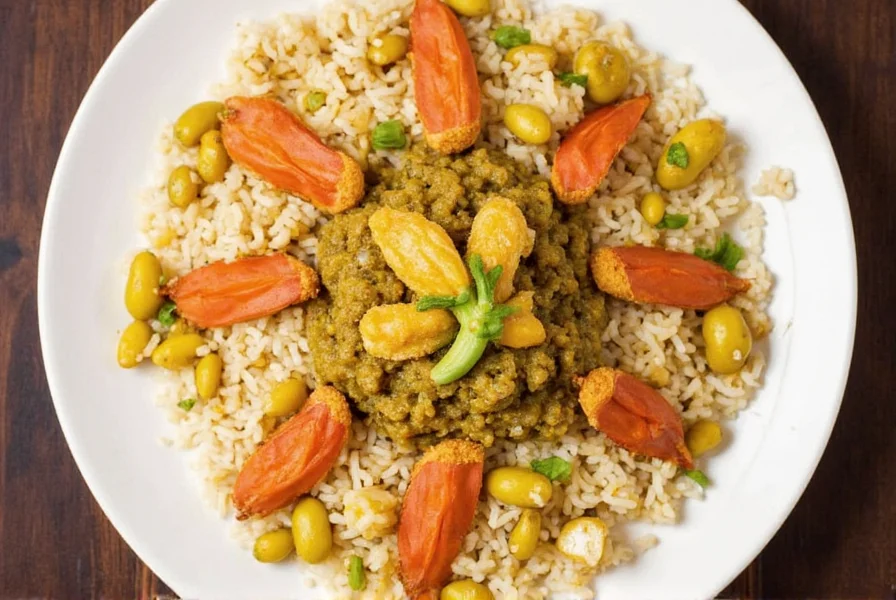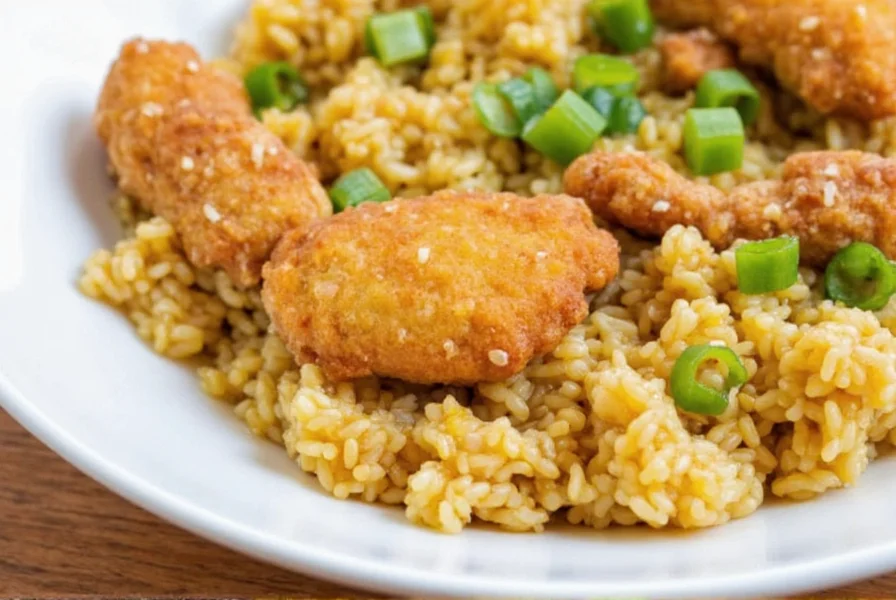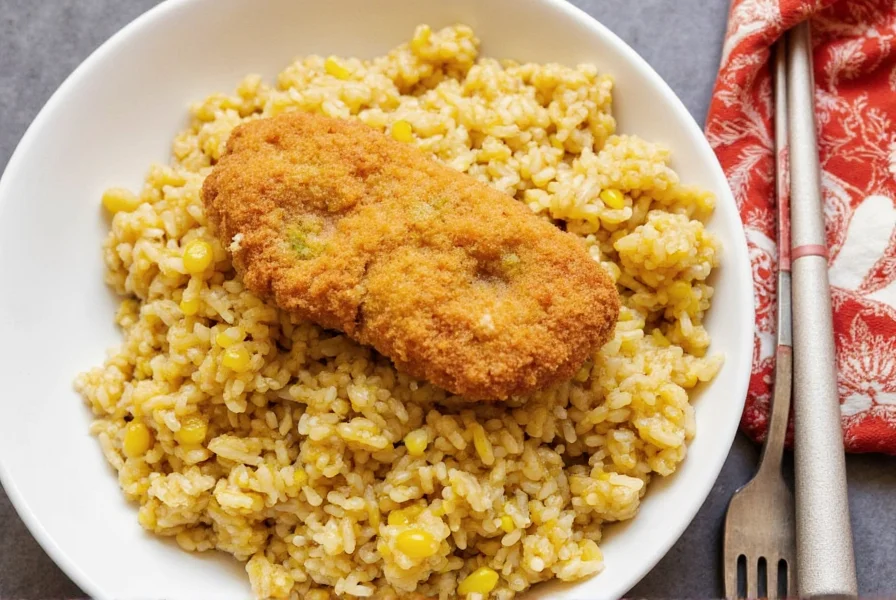Chicken Katsu Curry Rice: A Global Spice Journey from Japan to Your Kitchen
If you’ve ever bitten into a crispy, golden piece of chicken katsu smothered in rich, spiced curry and served over warm rice — you know you’re not just eating a meal. You’re experiencing a flavor explosion that tells the story of centuries-old spice trade routes, culinary fusion, and global love for comfort food.
In this article, we’ll explore everything about chicken katsu curry rice, from its humble Japanese roots to its modern-day variations across the globe. Whether you're a professional chef or someone who simply loves trying new recipes, prepare for a flavorful journey seasoned with practical tips, cooking secrets, and a buying guide to the best ingredients.
Table of Contents
- A Brief History: How Chicken Katsu Curry Came to Be
- The Spices Behind the Magic
- Step-by-Step Recipe: How to Make Chicken Katsu Curry at Home
- Global Variations: How Different Countries Put Their Spin on It
- Buying Guide: Best Products for Authentic Taste
- Frequently Asked Questions (FAQ)
- Conclusion: More Than Just Comfort Food
A Brief History: How Chicken Katsu Curry Came to Be
The origins of katsu (from the word “cutlet”) can be traced back to 19th-century Japan during the Meiji Restoration era. Inspired by Western dishes like schnitzel and cutlets, the Japanese adapted it into something uniquely theirs: breaded and deep-fried pork or chicken, known as tonkatsu or chicken katsu.
But how did curry come into play?
Curry was introduced to Japan via British colonials who brought Indian-inspired recipes back to their homeland. The Royal Navy had adopted curry from India, and it eventually made its way into the Japanese naval diet in the late 1800s. Over time, Japanese home cooks began adding their own twists — thickening it with flour, sweetening it slightly, and balancing the spices carefully.
By the mid-20th century, the pairing of chicken katsu and curry rice became a beloved staple in Japanese cafés, train stations, and households alike.
The Spices Behind the Magic
The beauty of chicken katsu curry rice lies in its balance of textures and flavors — crispy, creamy, savory, and subtly spicy. Let’s break down the key spices and ingredients that make this dish sing:
- Garam Masala: Though originally Indian, Japanese curry blends often mimic garam masala with their own mix of cardamom, cloves, cinnamon, and cumin.
- Turmeric: Adds warmth, color, and an earthy undertone.
- Paprika: Offers mild heat and vibrant red-orange hue.
- Fenugreek: Lends a slight bitterness balanced by sweetness elsewhere in the dish.
- Allspice & Bay Leaves: For depth and aroma.
- Soy Sauce & Mirin: Not spices per se, but essential for umami and sweetness in the sauce.
Spice Comparison Table
| Spice | Flavor Profile | Role in Curry |
|---|---|---|
| Garam Masala | Warm, aromatic, complex | Balances other spices |
| Turmeric | Earthy, slightly bitter | Colors the curry and adds depth |
| Paprika | Mildly smoky or sweet | Adds color and subtle heat |
| Fenugreek | Bitter, nutty | Lends complexity |
| Allspice | Peppery, clove-like | Enhances richness |
Step-by-Step Recipe: How to Make Chicken Katsu Curry at Home
Making chicken katsu curry rice at home is surprisingly simple once you get the rhythm of frying and simmering right. Here's a classic yet delicious version to try:
Ingredients
- 4 boneless chicken breasts
- 1 cup panko breadcrumbs
- 1 egg, beaten
- Oil for frying
- 2 tbsp butter
- 1 onion, chopped
- 2 garlic cloves, minced
- 2 carrots, diced
- 2 potatoes, peeled and diced
- 3 cups chicken broth
- 2 tbsp curry powder blend
- 1 tsp turmeric
- 1 tsp paprika
- 1 bay leaf
- Rice, cooked
Instructions
- **Marinate the chicken:** Pound each chicken breast to even thickness. Season with salt, pepper, and a bit of soy sauce. Set aside for 15 minutes.
- **Bread the chicken:** Dip each chicken fillet in egg wash, then coat evenly in flour, dip again in egg, and finally press into panko breadcrumbs.
- **Fry the chicken:** Heat oil in a large pan and fry the chicken until golden brown and fully cooked (about 4–5 minutes per side). Drain on paper towels.
- **Make the curry:** In a pot, melt butter and sauté onions until translucent. Add garlic, carrots, and potatoes.
- **Add broth and spices:** Pour in chicken broth and add all spices. Simmer for 20–30 minutes until vegetables are tender and sauce thickens.
- **Serve:** Slice the chicken katsu into strips, serve over steamed rice, and pour the hot curry on top. Garnish with pickled vegetables or furikake if desired.

Global Variations: How Different Countries Put Their Spin on It
Like many iconic dishes, chicken katsu curry rice has evolved differently across regions. Here’s how different countries enjoy this beloved dish:
| Country | Variation | Key Difference |
|---|---|---|
| Japan | Classic Chicken Katsu Curry | Mild, sweetish curry, served with rice and pickled vegetables |
| Thailand | Katsu Gaeng Keow Wan | Green curry base with lemongrass, kaffir lime, and Thai basil |
| Hawaii | Loco Moco Katsu Style | Served over rice with a fried egg and gravy instead of curry |
| South Korea | Katsu Kimchi Curry | Spicy kimchi-infused curry; extra tangy and fermented flavor |
| United States | Cajun Chicken Katsu Curry | Uses Creole seasoning and roux-based gumbo-style curry |
Buying Guide: Best Products for Authentic Taste
Whether you’re a novice or a seasoned cook, having the right ingredients makes all the difference. Here’s a curated list of products that bring authenticity and ease to your kitchen:
Top Curry Paste Brands
- S&B Golden Curry: Pre-mixed curry blocks that melt directly into your stew. Available in mild, medium, and hot. Great for quick meals.
- House Foods Vermont Curry: Slightly sweeter than others, ideal for families. Made in the USA using Japanese techniques.
- Kewpie Japanese Curry Mix: Powdered form, perfect for customizing spice levels and thickness.
Breadcrumbs and Flour Options
- Ajinomoto Panko Breadcrumbs: Light, crunchy texture. Essential for authentic chicken katsu crust.
- Nisshin Oil Co. Tempura Flour: Helps achieve a crispier coating when mixed with water or egg.
Spice Blends and Individual Spices
- Simply Organic Garam Masala: Rich and balanced, great for homemade curry sauces.
- McCormick Culinary Curry Powder: Versatile and easy to find, suitable for beginners.
- Frontier Naturals Fenugreek Seeds: For those who want to grind fresh fenugreek for deeper flavor.
Product Comparison Table
| Product | Type | Best For | Where to Buy |
|---|---|---|---|
| S&B Golden Curry | Pre-mixed curry block | Quick, family-friendly meals | Grocery stores, Amazon |
| Kewpie Curry Mix | Dry powder blend | Customizing spice and consistency | Asian grocery stores |
| Ajinomoto Panko | Breadcrumbs | Crispy, light crust | Supermarkets |
| McCormick Curry Powder | Spice blend | General-purpose curry making | Amazon, Walmart |

Frequently Asked Questions (FAQ)
Q: Can I use beef or pork instead of chicken for katsu?
A: Absolutely! Pork katsu is traditional, while beef katsu is less common but gaining popularity. Adjust cooking times accordingly.
Q: Is chicken katsu curry spicy?
A: Traditionally, Japanese curry is mildly spiced. If you prefer more heat, add chili flakes or choose a spicier curry brand.
Q: What kind of rice should I use?
A: Short-grain white rice works best. Some people prefer jasmine or basmati, but they change the flavor profile slightly.
Q: Can I make the curry ahead of time?
A: Yes! Like many stews, curry improves in flavor overnight. Store in the fridge for up to 3 days or freeze for longer shelf life.
Q: What are good side dishes to pair with chicken katsu curry rice?
A: Popular sides include tamagoyaki (sweet rolled omelette), pickled vegetables, or a simple green salad.
Conclusion: More Than Just Comfort Food
Chicken katsu curry rice is more than just a comforting plate of goodness — it's a celebration of cross-cultural exchange, spice innovation, and home-cooked joy. From the ports of India to the kitchens of Tokyo and beyond, this dish has traveled far and wide, adapting to every palate along the way.
Whether you're recreating the classic version or experimenting with global twists, there’s no wrong way to enjoy this iconic dish. So grab your favorite curry paste, fire up the stove, and take a bite of history with every spoonful.
Now that you’re equipped with knowledge, tools, and a taste for adventure — it’s time to let the spices speak for themselves.











 浙公网安备
33010002000092号
浙公网安备
33010002000092号 浙B2-20120091-4
浙B2-20120091-4